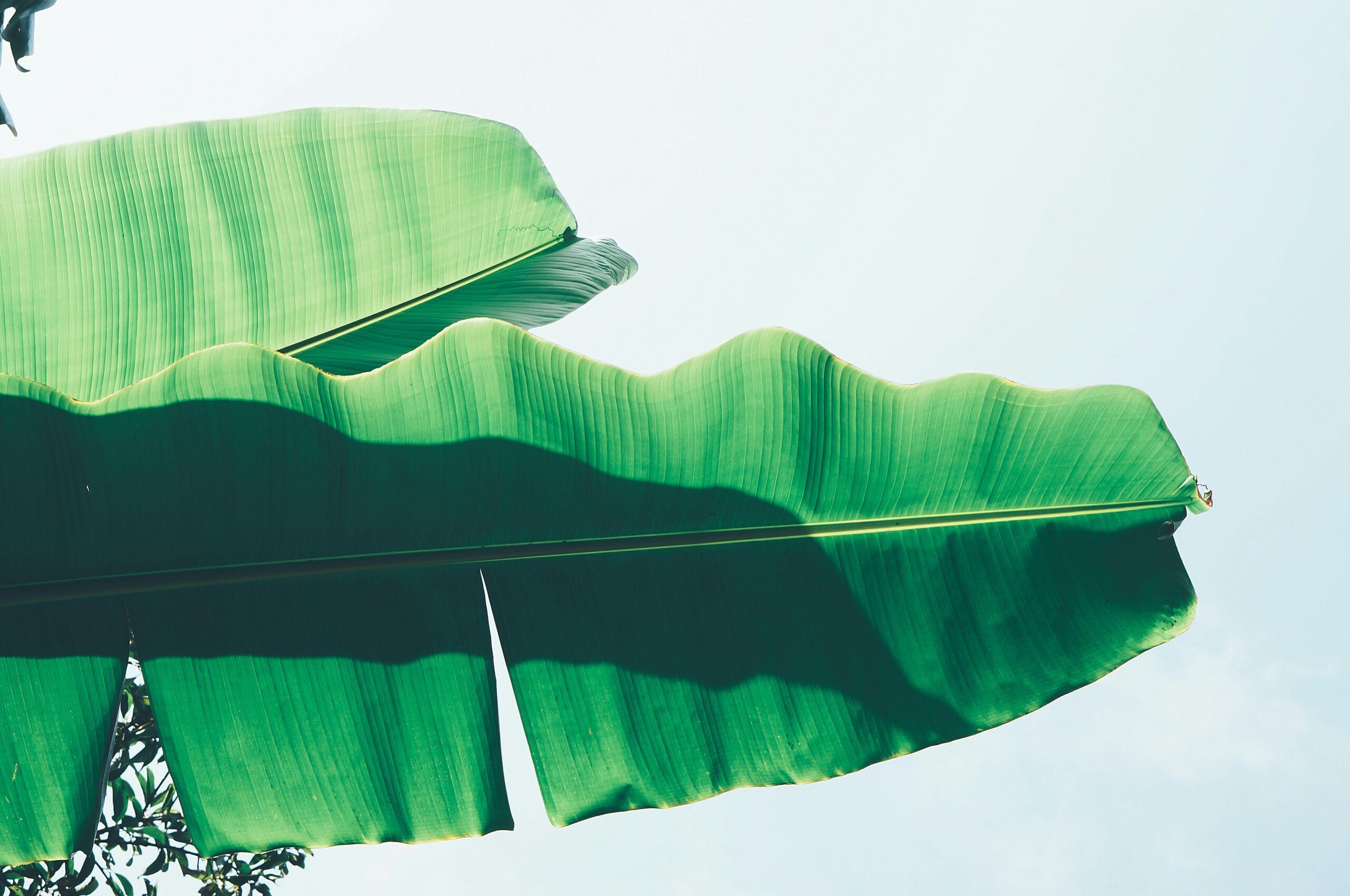
Agriwaste Natural Fibres
The aim of the project was to explore the use of agricultural residues to produce natural fibres, reducing reliance on conventional fibres like cotton. Building on the findings of the Laudes Foundation commissioned report ‘Spinning Future Threads’.
Problem Statement
Agricultural residues, often burned due to their low economic value, contribute to environmental harm and climate change. Simultaneously, the fashion industry’s reliance on resource-heavy fibres like virgin cotton exacerbates water and pesticide usage, as well as greenhouse gas emissions.
The “Spinning Future Threads“ report commissioned by Laudes, highlighted the potential of various agri-residues, such as banana, hemp, and pineapple, for producing cellulosic and natural fibres. This presented an opportunity for brands to incorporate these feedstocks into their product lines, reducing their dependence on virgin fibres like cotton. Moreover, this shift offers a valuable economic opportunity for farmers, enabling them to diversify their revenue streams by transforming what was once considered waste into a profitable resource.
Executive Summary
Fashion for Good launched the Agriwaste Natural Fibres Project in February 2022 with catalytic funding from the Laudes Foundation in collaboration with adidas, Bestseller, PVH Corp. and Vivobarefoot. This project aimed to transform agricultural residues such as banana, hemp, and pineapple into scalable, eco-friendly fibres for the textile industry. It demonstrated the technical and economic feasibility of these alternatives, while reducing the environmental impact of textile production. Key activities included technical feasibility assessments, Screening LCAs, and product prototype development.
It had three phases, an initial due diligence assessment that mapped the landscape and assessed selected innovators to understand their capabilities across technology, blends, feedstocks and pricing. In the second phase, Fashion for Good ran technical feasibility tests with Birla Cellulose and all six innovators to produce predetermined blends.
Based on the results of Phase 2, phase 3 ran pilot trials with three innovators (AltMat, Bananatex and Circular Systems) producing a select number of blends carrying out testing and developing product prototypes for denim, t-shirts, jackets and footwear.
These three innovators have conducted external LCAs, and the FFG impact experts reviewed them to ensure that the methodology is robust. Each innovator selected different impact categories; however, the FFG LCA experts ensured that key categories were addressed, including climate change/global warming potential, blue water consumption/water use, eutrophication, and ecotoxicity.
Goals of the Project
-
Identify innovations to convert agricultural residues into sustainable fibres.
-
Measure the environmental impact of these alternative fibres.
-
Address challenges such as fibre coarseness and drop-in feasibility for spinning.
-
Scale up these innovations through collaboration between brands and supply chain partners.
-
Project Results
-
Agri-residue feedstocks like hemp, abaca, and pineapple were proven viable for fibre production, achieving technical and economic success.
-
These fibres have a lower environmental impact than conventional cotton, reducing resource use, chemical inputs, and carbon footprint.
-
While not a direct replacement for cotton, these fibres offer unique properties and can be blended with cotton for specific applications like denim, t-shirts, jackets, and footwear.
-
Traceability is crucial for scaling adoption, ensuring the origins of agri-residues are validated for sustainability claims.
-
Funder
Innovation Partners
Project Partners
Innovators
Implementation Partners
Relevant Resources

Project to Transform Agricultural Waste into Green Fibers for Fashion Sector
“This ambitious project explores a new source of feed stocks for the fashion industry that, if scaled, will help drive both the agriculture and textile industry towards net-zero. We see great potential for these various agriculture waste streams that would otherwise have few secondary uses. By applying innovative technologies to develop natural fibers, we can diminish the pressure on existing natural fibers and shift away from unsustainable materials and sources,” says Katrin Ley, managing director, Fashion for Good.

In Conversation with Bananatex: From Bananas to Backpacks
Other Projects

The Next Stride: Bio-based Materials for Footwear Soles
“The Next Stride: Bio-based Materials for Footwear Soles” aims to validate the performance and environmental impact of bio-based polymers as sustainable alternatives to the fossil fuel-derived materials currently used in footwear soles. The objective is to collectively de-risk the transition to these “next-generation” materials by rigorously testing their technical properties and assessing environmental benefits. Ultimately, the purpose is to accelerate the adoption of these bio-based solutions and pave the way for a more sustainable footwear industry.

Beyond50 Denim: Combining Cottonised Hemp And Green Chemistry
“Beyond50 Denim: Combining Cottonised Hemp And Green Chemistry” aims to validate the performance and environmental impact of cottonised hemp processed with green chemistry to act as a true alternative to cotton in denim applications. The project goal is to evaluate the performance of SEFF’s cottonised hemp fibre in combination with Fibre52’s bio-friendly chemistry solution within denim fabric applications with a total hemp content of 50% and above. The fabrics will be benchmarked against conventional 100% cotton denim with a specific focus on handfeel and aesthetic characteristics.

Price Parity Toolkit
The Price Parity Toolkit (PPT) was designed to help bridge the price gap between next-gen* and conventional materials. Developed by Fashion for Good with the support of Canopy, this industry-supported framework introduces a financing mechanism that decouples price premiums at early stages of the supply chain to enable adoption and drive the scale of lower-impact materials.













